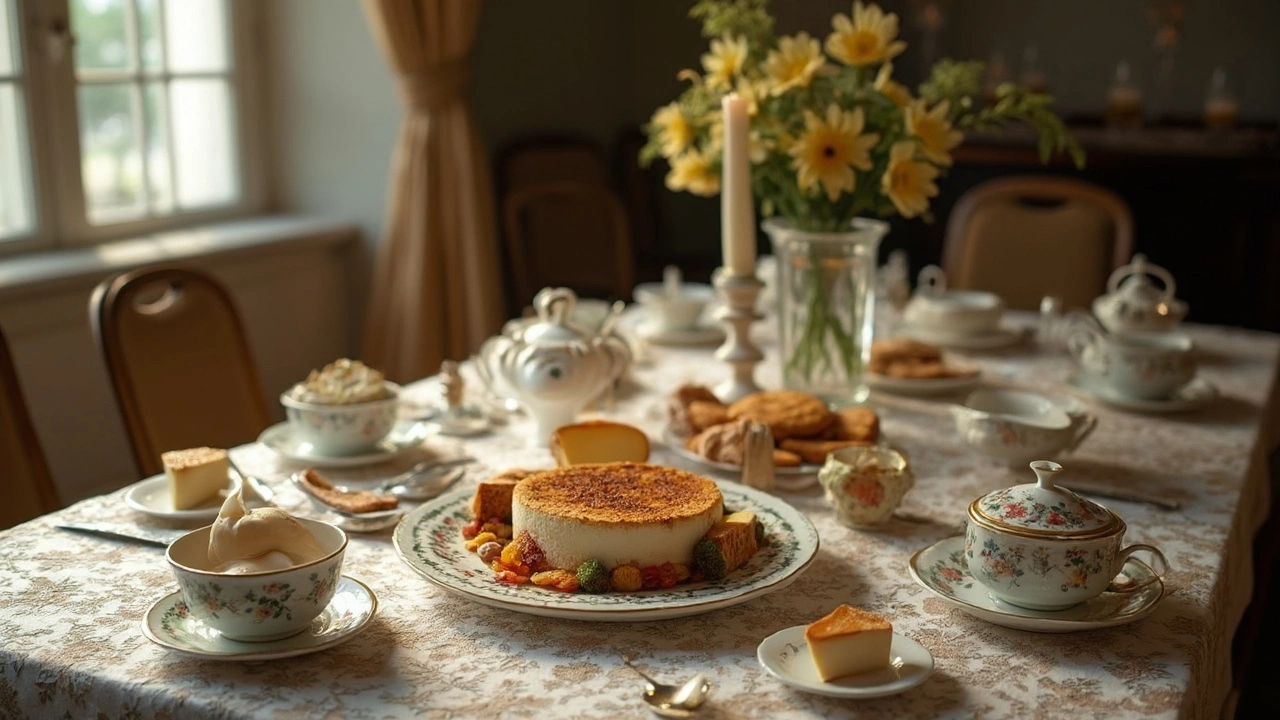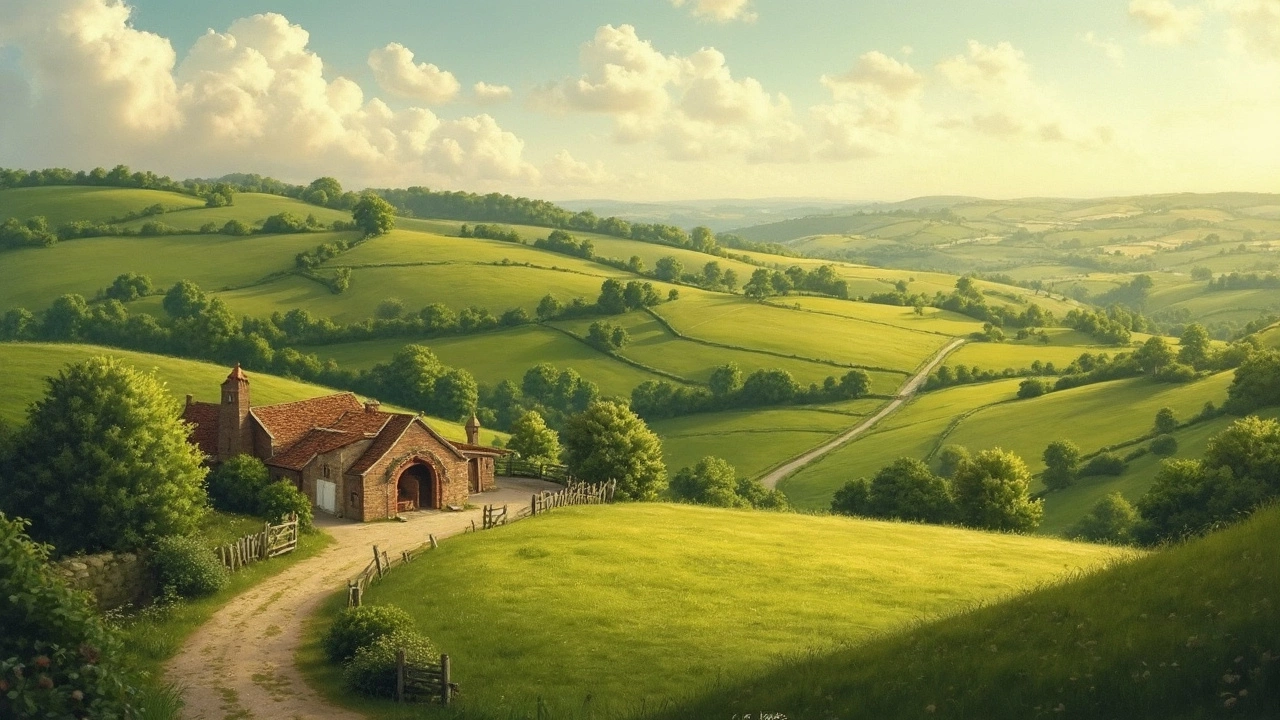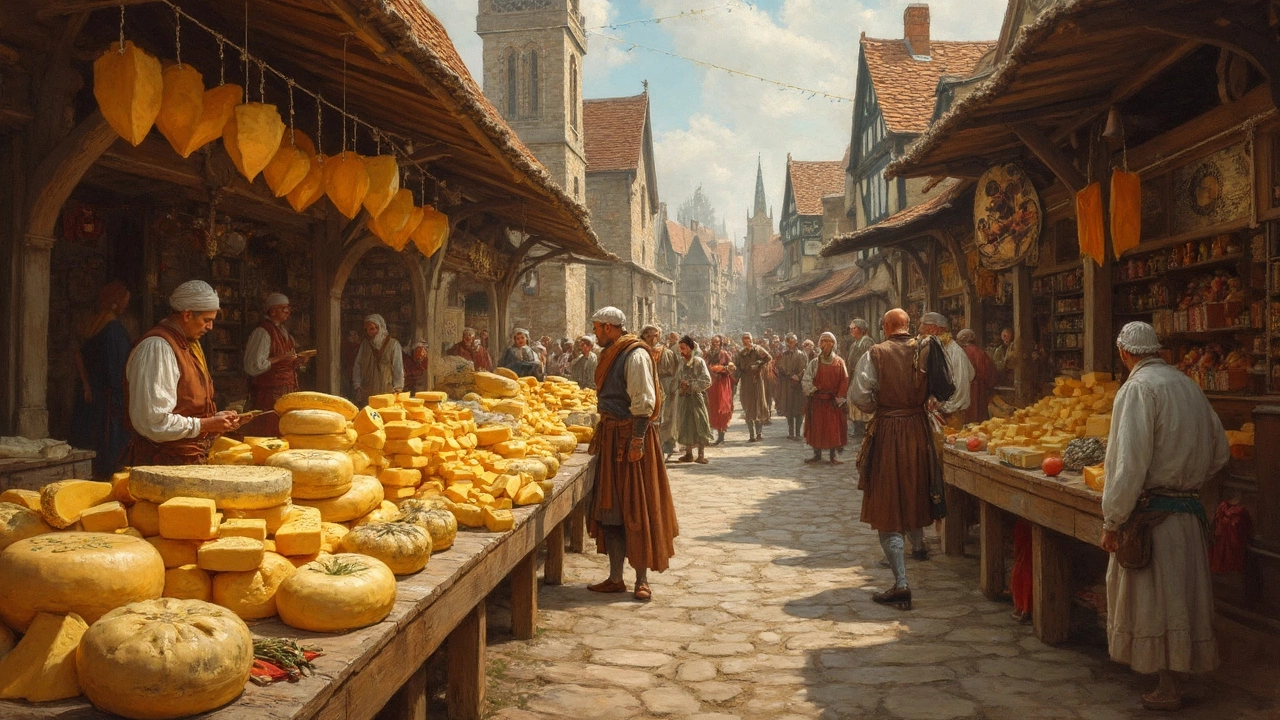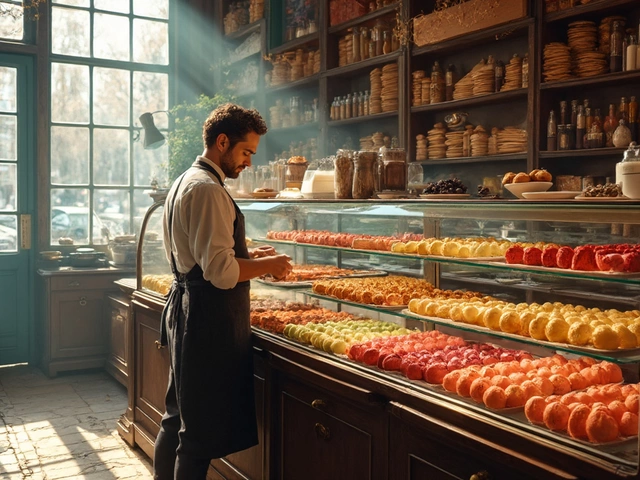Cheese—everyone loves it, but have you ever wondered where it first came from? Cheese is ancient, like really ancient, and it's got a fascinating backstory. Most historians think it all began somewhere in the Middle East or Central Asia about 7,200 years ago. Imagine folks back then experimenting with milk, trying to figure out how to store it longer.
As they traveled and traded, cheese recipes and techniques spread like wildfire across Europe and other parts of the world. Nowadays, every country has its own spin on cheese, contributing to a rich tapestry of flavors and styles. Even Italy's fabulous dessert, tiramisu, owes a nod to creamy mascarpone cheese, making it a worldwide favorite.
Ready to learn more about cheese's journey from mysterious origins to its starring role in culinary delights like tiramisu? It's a story of innovation, adventure, and, of course, deliciousness.
- The Mysterious Birth of Cheese
- How Cheese Spread Across the Globe
- Cheese and Tiramisu: An Unlikely Duo
- Surprising Facts About Cheese
- Tips for Enjoying and Pairing Cheese
The Mysterious Birth of Cheese
When it comes to who actually invented cheese, it's kind of a mystery. But here's what we know: it all started thousands of years ago. Picture this—humans had figured out how to domesticate animals like cows and goats, and voilà, they had a steady supply of milk.
Back then, people needed a way to make this perishable milk last longer, especially in the hot climates of the Middle East or Central Asia. Legend has it that early cheese happened accidentally. Someone transported milk in a sheep's stomach, a container with natural enzymes, including renin, which is a key for turning milk into cheese.
Fast forward, and cheese becomes a staple with our ancient friends realizing it's not only preserving milk but also tastes pretty darn good! From around 5500 BC, archaeologists have found evidence of cheese-making in what is now Poland. Talk about a long culinary journey!
As cheese-making spread, different cultures got creative, experimenting with methods and ingredients, quickly making it a part of diets worldwide. Today, cheese isn't just a food item; it's a cultural phenomenon with diverse varieties and methods that have evolved through time.
Even now, there's nothing quite like the joy of discovering a new cheese, knowing that it carries a piece of history from its invention days to your plate.
How Cheese Spread Across the Globe
As we dive into the journey of cheese across the world, it’s clear that its spread is nothing short of a culinary adventure. It all started when those ancient folks in the Middle East and Central Asia stumbled upon the magical process of turning milk into cheese. According to historians, as early as the Roman times, people were already carrying cheeses in their travels.
Once established, Roman armies and tradesmen became pivotal in taking cheese to Europe. They were pretty much the food influencers of their day, spreading the word from Italy to Britain. Hard cheeses, which lasted longer without spoiling, were a big hit among these travelers, and it wasn’t long before cheese became a staple throughout the continent.
Speaking of Europe, countries like France, Switzerland, and the Netherlands embraced cheese like a long-lost friend. Each created unique varieties, developing flavors that represent their regions—think French Brie and Swiss Emmental. By the Middle Ages, monks in monasteries took cheese crafting to new heights with serious dedication. It was like an early form of gourmet cuisine!
With the discovery of the New World and the age of exploration, cheese made its way to the Americas. Immigrants brought their cheese-making traditions, leading to the birth of American favorites like cheddar. Today, the U.S. leads in cheese production, offering a vast array of options.
So how did cheese end up in tiramisu? It turns out that Italy, with its romantic take on food, couldn't resist pairing creamy mascarpone with coffee and cake. And voilà, tiramisu became a beloved dessert! This demonstrates cheese's versatile role in our diet, far beyond being just a pizza topping.
- Middle East and Central Asia: Birthplace of early cheese-making.
- Roman Empire: Catalyst for cheese spread across Europe.
- Europe: Each region embraced and adapted cheese, leading to iconic varieties.
- New World: Immigrants carried cheese-making skills, expanding the global palate.
Whether you’re grateful for the classic Gouda or more adventurous blue cheeses, it’s clear that cheese's influence spans the globe and centuries. Its journey from a simple survival food to a gourmet staple showcases its universal appeal and cultural significance. Curious about your cheese's roots? It's worth reflecting on each bite's connection to history!

Cheese and Tiramisu: An Unlikely Duo
When you think of cheese, tiramisu probably isn't the first thing that pops into your head. But surprise, surprise! This delightful Italian dessert wouldn’t be the same without its creamy, cheesy component: mascarpone. This cheese is super important because it gives tiramisu its rich, velvety texture.
Mascarpone, unlike the hard and aged cheeses you might be used to, is soft and fresh. It’s made by curdling cream with an acidic substance such as lemon juice or vinegar. This process results in a rich, buttery flavor, perfect for desserts. Mascarpone gained fame thanks to its starring role in traditional Italian dishes, but it had a history of its own before that.
Boldly claiming its space in the dessert world, tiramisu originated in the Veneto region of Italy. Legend has it that it was invented in the 1960s at a restaurant called Le Beccherie. The combination of coffee, cocoa, ladyfingers, and mascarpone creates a balance of flavors adored by many worldwide. It's this unique blend that makes tiramisu so irresistible.
Want a quick tip? If you're attempting to make tiramisu at home, don't skimp on the quality of mascarpone. The best mascarpone can make the dessert divine. Also, remember to let it chill properly—it allows the flavors to meld beautifully.
Another way to enjoy mascarpone's unique taste? Pair it with fruits for a simple but elegant dessert. Or, dollop it onto your morning oatmeal for a creamy twist. It's these small culinary adventures that showcase the versatility and importance of cheese in dishes like tiramisu.
Surprising Facts About Cheese
Cheese isn’t just for pizza or pasta—it’s collected some really cool and weird facts over its long history. First up, there are over 1,800 different types of cheese worldwide. Yes, you read that right! From crumbly feta to creamy brie, the variety is almost endless...
Here's a kicker: certain cheeses, believe it or not, can naturally develop a hint of blue in them because of a type of mold called Penicillium. This mold is the same one that gives Roquefort and Gorgonzola their signature flavor.
- The oldest evidence of cheese-making was found in Poland, dating back over 7,000 years!
- Did you know cheese is a traveler's secret ally? Its low moisture content makes hard cheeses like Parmigiano-Reggiano perfect for long journeys.
- France is a known powerhouse for cheese, boasting around 1,000 different types, each with unique laws regarding production.
Now for a fun, quirky fact: in 2017, Italians made a pizza topped with a record 154 varieties of cheese! Crazy, right?
If you're watching your diet, consider this: despite its creamy reputation, studies show that consuming cheese in moderation might not be bad for your waistline. It even contains valuable nutrients such as calcium and protein.
Finally, on a list of top cheese consumers, the French lead with about 57 pounds of cheese enjoyed per person each year. That’s commitment!

Tips for Enjoying and Pairing Cheese
Cheese is more than just a delicious snack—it's an experience. And the best way to enjoy it is by knowing how to pair it well with foods and drinks. Let's dive into some simple tips to help you savor every bite.
First up, consider the cheese history and its origin when pairing. Cheeses from certain regions naturally go well with wines and foods from the same area. For example, Italian cheeses like Parmesan and Gorgonzola pair beautifully with Italian wines.
When you're thinking about textures, balance is key. A strong-flavored, creamy cheese pairs nicely with a crunchy cracker or bread, giving your tastebuds a delightful contrast.
- Soft cheeses like Brie are fantastic with fresh fruits and nuts, creating a sweet and savory combo that hits all the right notes.
- Hard cheeses such as Cheddar or Gouda work wonders with pickles or chutney, adding a punch of zest.
Don't forget about drinks! Wine is classic, but don't shy away from beers or even teas. A robust red wine or a dark beer can complement the richness of matured cheeses, while a light white wine or green tea can balance fresh cheeses.
And if you're feeling a little adventurous, you might want to explore some surprising cheese invention pairings. Ever tried a sharp blue cheese with a tangy apple? It's an unexpected match made in heaven.
| Cheese | Suggested Pairing |
|---|---|
| Cheddar | Apple slices |
| Brie | Honey and walnuts |
| Gorgonzola | Pears and balsamic |
Finally, let your taste buds be your guide. Everyone's palate is different, and what might work wonders for one person may not for another. So grab a few different options and have fun experimenting. After all, these guidelines are just stepping stones to finding your perfect cheese enjoyment experience!





